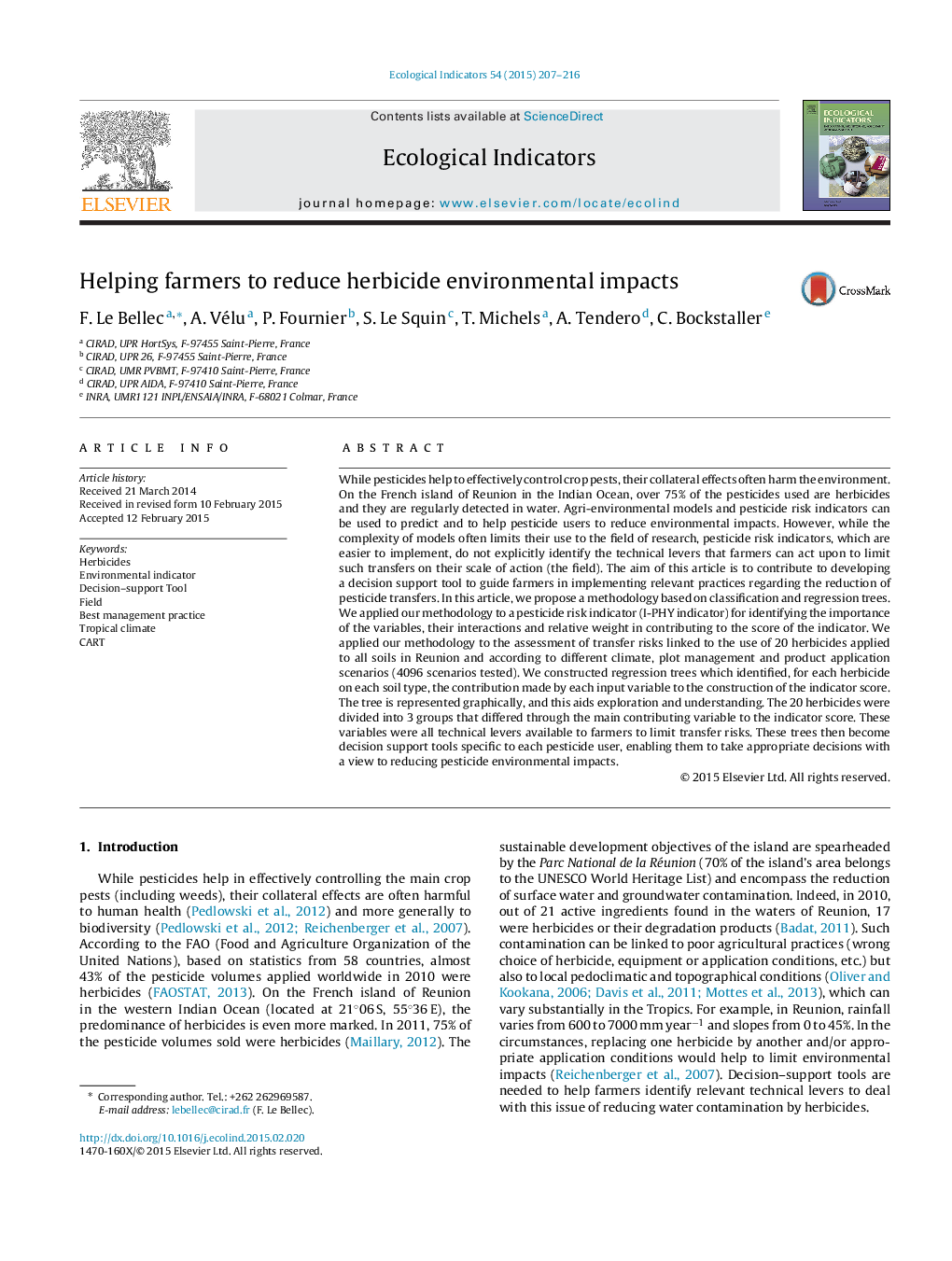| کد مقاله | کد نشریه | سال انتشار | مقاله انگلیسی | نسخه تمام متن |
|---|---|---|---|---|
| 6294486 | 1617147 | 2015 | 10 صفحه PDF | دانلود رایگان |
عنوان انگلیسی مقاله ISI
Helping farmers to reduce herbicide environmental impacts
ترجمه فارسی عنوان
کمک به کشاورزان برای کاهش اثرات زیست محیطی علف کش
دانلود مقاله + سفارش ترجمه
دانلود مقاله ISI انگلیسی
رایگان برای ایرانیان
کلمات کلیدی
علف کش ها، شاخص محیط زیست، تصمیم گیری ابزار پشتیبانی، رشته، بهترین مدرک مدیریت، آب و هوای استوایی، کارت،
موضوعات مرتبط
علوم زیستی و بیوفناوری
علوم کشاورزی و بیولوژیک
بوم شناسی، تکامل، رفتار و سامانه شناسی
چکیده انگلیسی
While pesticides help to effectively control crop pests, their collateral effects often harm the environment. On the French island of Reunion in the Indian Ocean, over 75% of the pesticides used are herbicides and they are regularly detected in water. Agri-environmental models and pesticide risk indicators can be used to predict and to help pesticide users to reduce environmental impacts. However, while the complexity of models often limits their use to the field of research, pesticide risk indicators, which are easier to implement, do not explicitly identify the technical levers that farmers can act upon to limit such transfers on their scale of action (the field). The aim of this article is to contribute to developing a decision support tool to guide farmers in implementing relevant practices regarding the reduction of pesticide transfers. In this article, we propose a methodology based on classification and regression trees. We applied our methodology to a pesticide risk indicator (I-PHY indicator) for identifying the importance of the variables, their interactions and relative weight in contributing to the score of the indicator. We applied our methodology to the assessment of transfer risks linked to the use of 20 herbicides applied to all soils in Reunion and according to different climate, plot management and product application scenarios (4096 scenarios tested). We constructed regression trees which identified, for each herbicide on each soil type, the contribution made by each input variable to the construction of the indicator score. The tree is represented graphically, and this aids exploration and understanding. The 20 herbicides were divided into 3 groups that differed through the main contributing variable to the indicator score. These variables were all technical levers available to farmers to limit transfer risks. These trees then become decision support tools specific to each pesticide user, enabling them to take appropriate decisions with a view to reducing pesticide environmental impacts.
ناشر
Database: Elsevier - ScienceDirect (ساینس دایرکت)
Journal: Ecological Indicators - Volume 54, July 2015, Pages 207-216
Journal: Ecological Indicators - Volume 54, July 2015, Pages 207-216
نویسندگان
F. Le Bellec, A. Vélu, P. Fournier, S. Le Squin, T. Michels, A. Tendero, C. Bockstaller,
